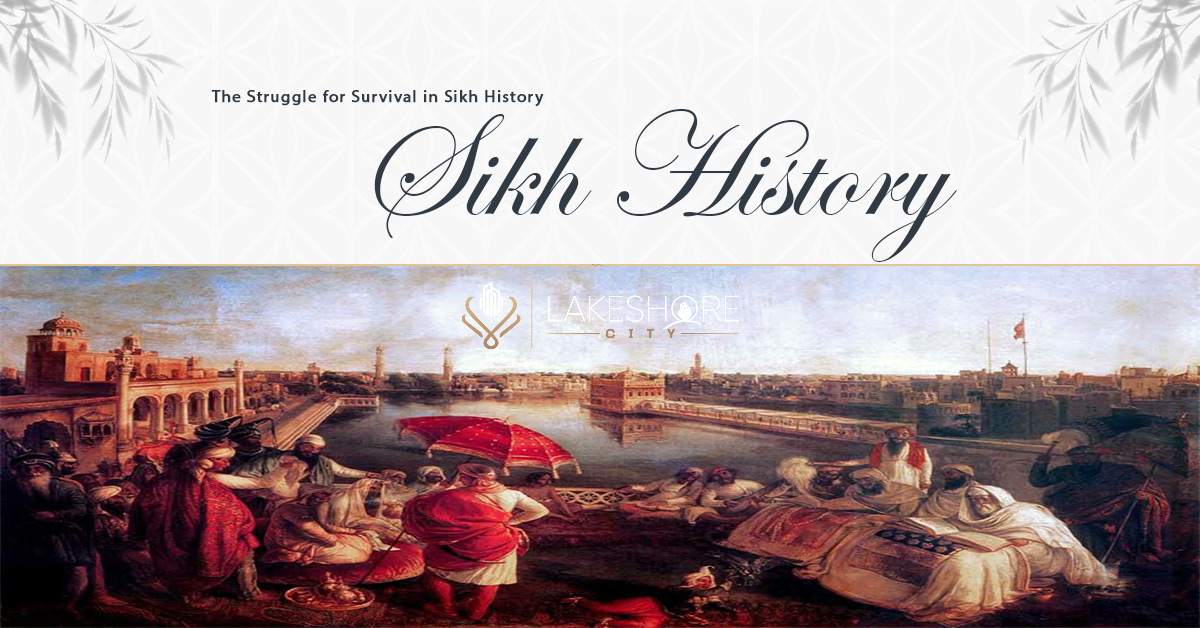The process of initiation into the Khalsa helps to bring the community closer together in preparation for the upcoming tests. The rest of Guru Gobind Singh’s reign was marked by severe warfare as the Sikh community fought itself against the continuous attacks of the local Hindu chiefs and the Mughal army. These attacks occurred while Guru Gobind Singh was still in power. The Sikhs were expelled from Anandpur against their will in the year 1704. During the chaos that ensued, two of Guru Gobind Singh’s sons were taken out of the picture and slain. The other two were apprehended and eventually killed through various forms of torture. However, the resilience of the community was not broken as a result of these catastrophes.
The guru was stabbed to death in the year 1708 by assassins who had invaded his camp under the guise of friends. He was successful in killing one of them, and his guards were able to take care of the other one. Despite receiving care for his wounds, Guru Gobind Singh’s injuries were severe; a few days later, when stringing his bow, the wounds opened back up again. After gathering his disciples, the guru bid farewell to the community before handing over the spiritual leadership to the Guru Granth Sahib.
However, Guru Gobind Singh was able to survive the Mughal Emperor Aurangzeb, who passed away in the year 1707. When Guru Gobind Singh passed away, he was on the side of Bahadur Shah in the complicated struggle for Mughal succession that was going on at the time. During these turbulent years, Banda Singh established Sikh sovereignty over a portion of Punjab, turning parts of the region into a Sikh stronghold. The rallying cry was “Raj Karega Khalsa!” (which translates to “The Khalsa shall rule!”). The attempt was unsuccessful and only lasted from 1712 until 1716, but it did lay the framework for what was to come in the future. Sikhs were caught in the crossfire of battles and retribution during much of the 18th century, coming under attack and being besieged by Afghans as well as Mughals. Both groups had grudges against one another. However, beginning in the 1760s or thereabouts, Sikhs established themselves as the de facto rulers of various sections of the Punjab.
By the time the 18th century drew to a close, a man by the name of Ranjit Singh had amassed an army that was powerful enough to seize power in the city of Lahore, which later served as the capital of a Sikh state for forty years. In 1802, he extended his rule to the city of Amritsar, which allowed him to consolidate his control over the different Sikh confederacies. Ranjit Singh has exceptional talents in the art of diplomacy, as evidenced by the fact that his government included both Muslim and Hindu officers. After he died in 1839, the Sikh kingdom descended into chaos, which paved the way for the British Empire to acquire the Punjab the following year in 1849.
Our Featured Article:
Read More: Religious Tourism in Pakistan in 2023
Don’t miss the chance to invest with Lakeshore! Secure your investment today by investing your financial investment with Lakeshore in the following available options like Lakeshore City, Lakeshore Club, and Lakeshore Farms.
For More updates, please Contact +92 335 7775253 or visit our website https://lakeshorecity.com/
Lakeshore City is the upcoming elite lifestyle at Khanpur Dam. Offering no parallel amenities for the members and owners of distinguished farmhouses.
Become Part of Luxurious Lifestyle
Contact: 0335 7775253



